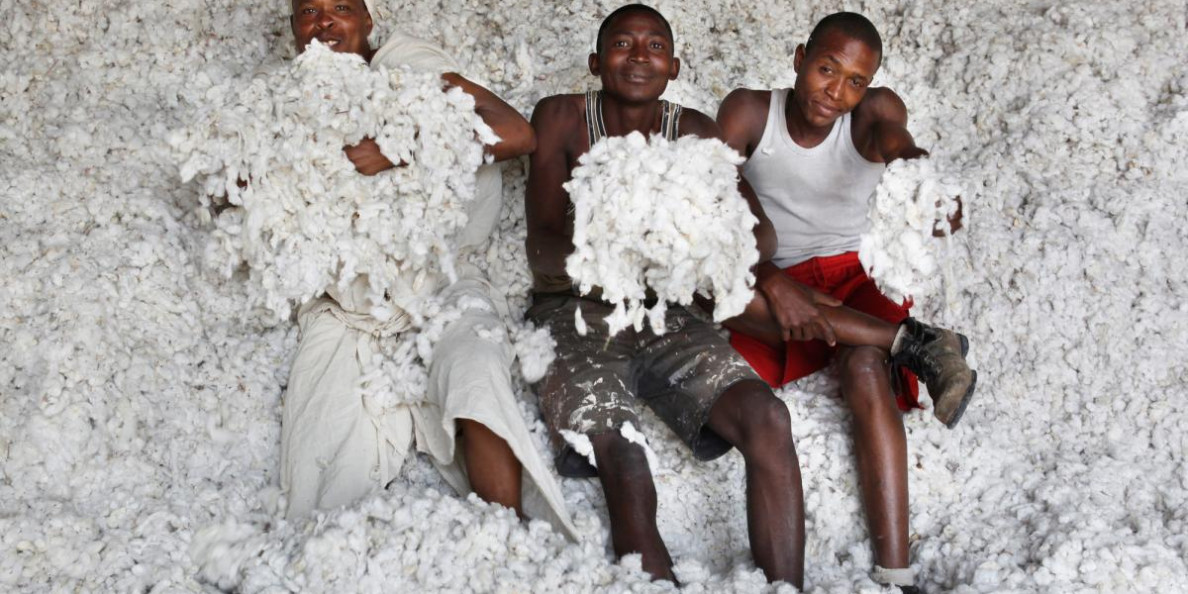BY VERENARDO MEEME
Upon harvesting the field trial planted at Mwea in Kenya’s Central region, researchers determined that the Bt cotton yields 6.1 tonnes per hectare. By comparison, the conventional cotton planted alongside it produces just 1.5 tonnes per hectare, said Dr. Charles Waturu, a senior research scientist with the Kenya Agriculture and Livestock Research Organization (KALRO) and principle investigator leading the Bt cotton project.
A total of four national performance trials were planted in various regions of the country, with harvests expected to conclude within a month.
Waturu expressed confidence that the crop has met all the parameters required to it move to the next stage of commercialization now that the national performance trials are wrapping up.
“The results from the biotech cotton have demonstrated the potential that it has in transforming the textile industry in the country,” Waturu said. “It is evident that there is more potential on GM cotton than the conventional one based on what we have just witnessed on the trial fields.”
The conventional variety produces just 10 bolls per stem while the biotech variety yields more than 35. The number of bolls determines how many kilos of cotton that farmers can harvest from their fields.
The completion of the performance trails now shifts the fate of the crop to the government, as President Kenyatta on June 21 directed the ministry responsible for agriculture, industry, environment, health, and education to fast track the steps remaining in the approval process for commercializing Bt cotton — the nation’s first GM crop.
However, Dorrington Ogoyi, chief executive of the National Biosafety Authority, which manages genetically modified organisms (GMOs) in the country, noted that “the issue of the ban needs to be addressed before we move forward with the next stage.”
Kenya imposed a ban on GMO crops and products in 2012. But this past April, the government announced it was reconsidering the ban to support food security, as some 1 million Kenyans require emergency food assistance due to prolonged drought.
Waturu is optimistic that the Cabinet will soon lift the ban, thereby allowing farmers to fully access Bt cotton seeds.
In the meantime, KALRO will be distributing Bt cotton seeds to about 1,000 farmers throughout the country so they can grow the crop for demonstration purposes.
Waturu told religious leaders who visited the Mwea trial that the Bt cotton had shown resistance to bollworm, which farmers primarily blame for crop losses, and thus reduces the use of pesticides.
He also noted that the mealybug has emerged as a pest now devastating cotton production in central Kenya.
Purity Mugo, a farmer in Mwea whose crop has been wiped out by the mealybug, said the government should allow farmers to access the new GM variety of cotton seed.
“I will not get anything from my farm this year and this is reason enough why the government should allow us to access this superior seed that can resist pests,” Mugo said.
Low production has failed to supply the 120,000 bales of lint used per year by Kenya’s textile industry, requiring the county to import more than half of what it needs. During last June’s re-launch of the Rivatex textile factory in Eldoret, President Kenyatta observed that the production of Bt cotton will undoubtedly boost the textile industry and create a more sustainable livelihood for cotton farmers.
“I am indeed aware we are at an advanced stage of the national performance trials for Bt cotton which will give better yields and returns to our farmers compared to conventional cotton,’’ he said at the time.
Kenya’s Vision 2030 has identified cotton as a key economic sub-sector, with the potential to benefit eight million people in the drier areas of the country. Kenya has the estimated potential to produce 260,000 bales of cotton if the area under cultivation is increased.
According to Trade and Cooperatives Cabinet Secretary Peter Munya, Kenya’s total apparel exports to the United States now stand at US$371.66 million, placing the nation top among countries in sub-Saharan Africa.


